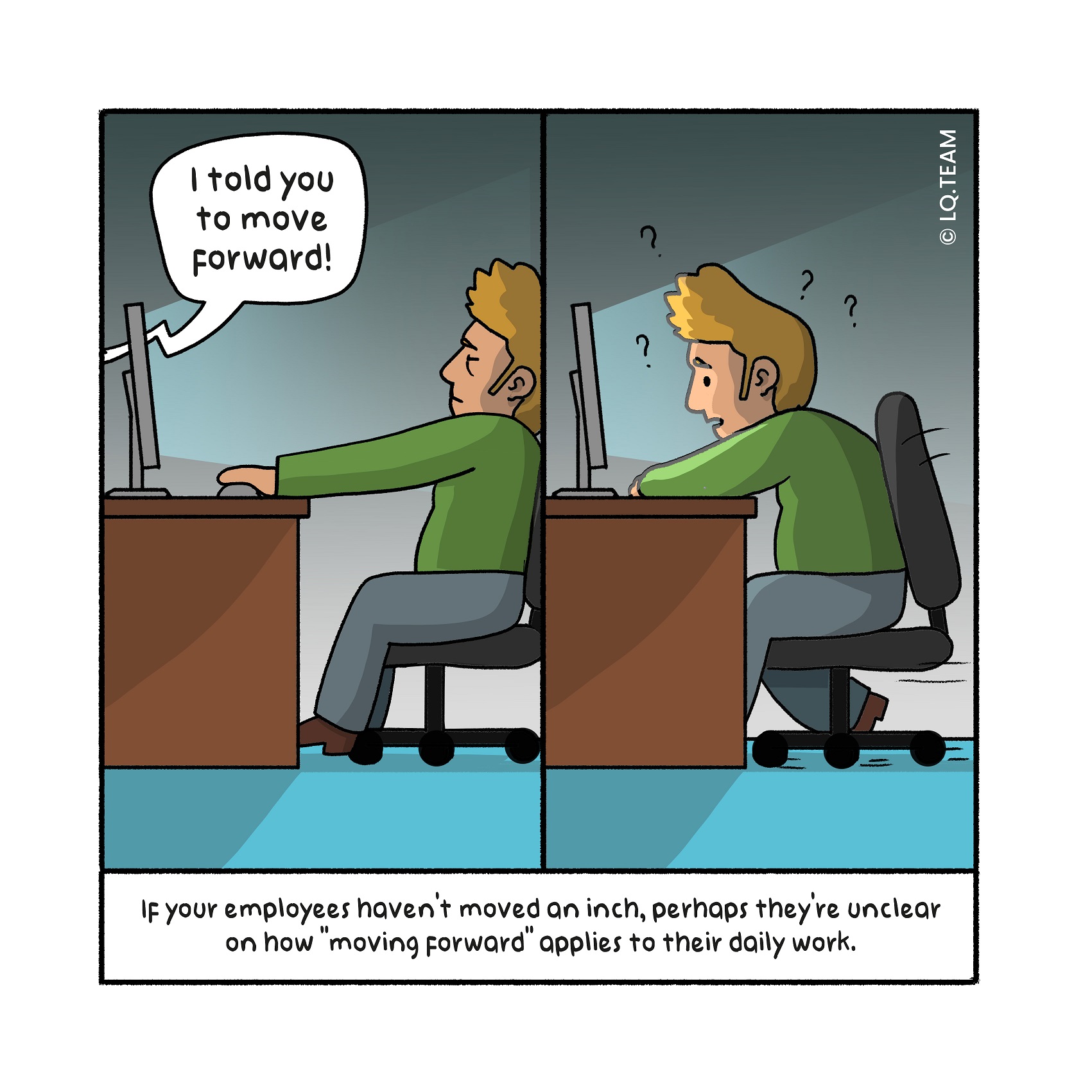
Nut to crack: How do you get an individual to act?
Let us assume you were able to successfully communicate the reasons why change is needed and why postponing is not an option. And all leaders have worked hard to convey this message to their people. So, why, then, are spe- cific individuals still not moving?
This is often the moment you, as a leader, become frustrated. Why are they not taking any action? Does a lack of understanding cause it, or are they simply unwilling to act? How do you get each individual ready and willing to move?
Nutcracker: See the change from today’s perspective
Clarifying what the change means is essential for getting people into action. For example, saying you want to move towards a customer-centric end-to-end supply chain is abstract. This doesn’t explain to planners in the factory that, from now on, they will need to work proactively with their sales colleagues if there is an issue in the production process.
Describing “a day in the life” and detailing how each role should act after the change is implemented, will help clarify the impact on an employee. En- couraging people to go through this process and helping them see what the change means in their daily operations is even more powerful. The following example illustrates how this can be done.
Real-life example: Approaching a target with a different perspective
A company in the automotive sector wants to grow by 20 per cent in the coming year. Lucas, the commercial director, believes this is possible. His team has had a relaxed start to the year, confident in their ability to reach the growth target, as there are plenty of opportunities in the market.
It is now March, and Lucas is worried. He is wondering how he can make his team un derstand that they need to approach their job with more ambition to achieve the targets. How can he make them accelerate today rather than tomorrow?
He brings his team together. He asks them to calculate the following: how many signed contracts do you need to achieve the target? How many leads do you need to complete this number of contracts? What type of leads are they? And what does that mean for the number of first and second conversations with potential clients required? His sales team needs to triple the number of meetings compared to what they are currently scheduling for. This insight helps focus the team and bring new energy to the actions needed today. The muchneeded acceleration follows quite naturally after that.
Tip for change leader
Organise “standing in the shoes of the worker” sessions in which the employees in volved analyse the change’s impact on them. You can find more information on this topic in Challenge 9.
Tip for change enabler
Describing “a day in the life” clarifies what an individual needs to stop doing, start doing or do differently. Defining this impact for each role is pivotal in any change process. See Challenge 13 for more information on how to do this.
Kernel: Bring the change into daily operations
It requires discipline and hard work to specify the impact of a business trans- formation for individuals today. But it is worth trying, as it typically unlocks the energy for individuals to act.

